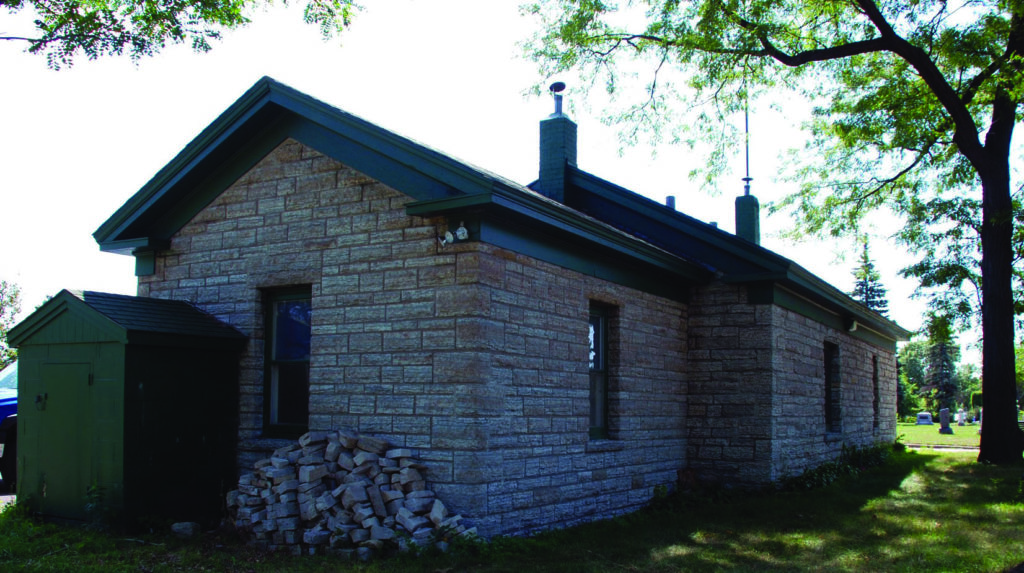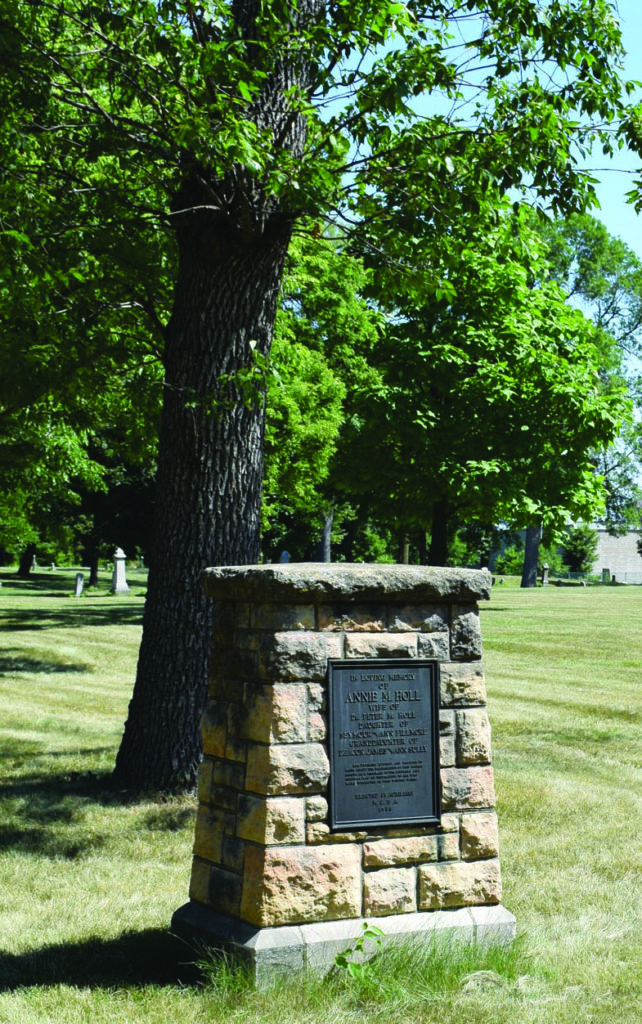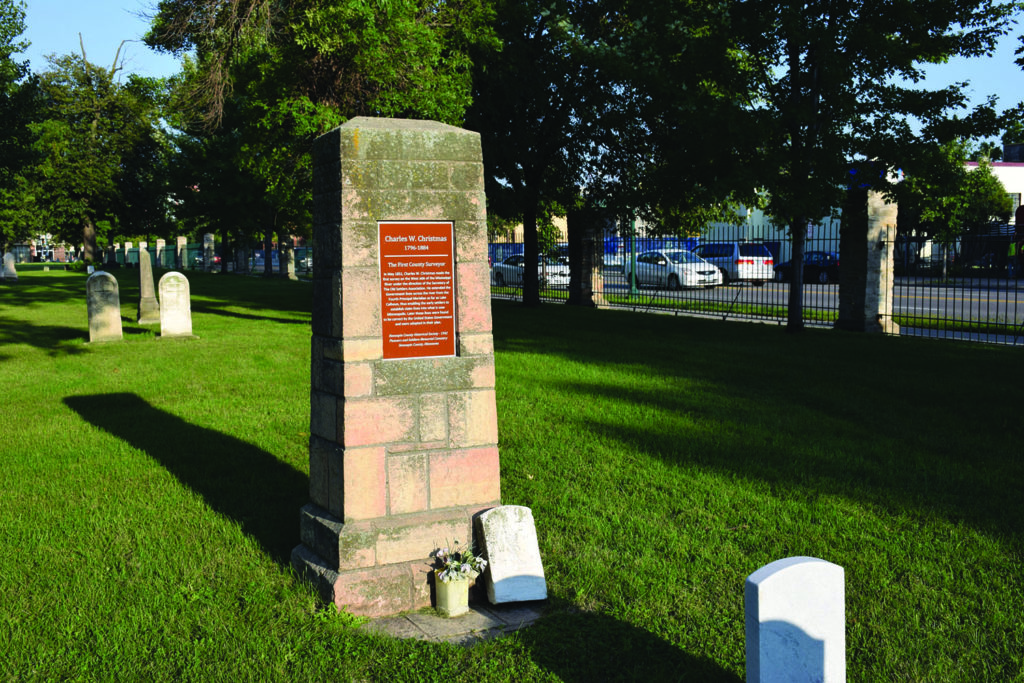By SUE HUNTER WEIR
177th in a Series
If you look closely at the east or west side of the Caretaker”™s Cottage, most of which was built in 1871, you will see a subtle difference between the back room and the two front rooms. That difference is how you can tell that the backroom is a fairly recent (only 80 years old rather than 149 years old) addition. The roofline is a little lower but that”™s not an age difference. The masonry is identical except for one thing: the top and bottom edges of the newer stones are perfectly straight while the stones on the older rooms are rough-cut. The new stones were cut using power tools while the old stones were cut by hand.

It”™s been a challenge to put a date on the “new” addition but the answer was hidden in the monthly reports that Albert Nelson, the Cemetery”™s caretaker from 1827 until 1953, wrote to his supervisor on the last day of the month. Mike Barth, the current caretaker, found those reports last fall.
The addition to the Caretaker”™s Cottage, like many other improvements in the Cemetery, can be traced to President Franklin Delano Roosevelt”™s New Deal. On May 6, 1935, FDR”™s Works Progress Administration went into effect creating jobs on public works projects for millions of American around the country. The Cemetery was one of those public works sites.
Mr. Nelson first mentioned the “tool room,” as he called it, in his June 1939 report. Just a few weeks later, in July 1939, work on the project came to a halt during a nationwide strike by WPA workers over a cut in their pay. Although the strike was short lived, work on the Cottage did not resume until November when Mr. Nelson reported that the work crew was cutting the opening for the door that would connect the front rooms to the back room and that work on the building was nearly complete. His announcement turned out to be somewhat premature since it actually took until July 1940 for the rest of the work, which included painting the new addition and putting a roof on, to be completed.

Two other enduring structures that date from the WPA era are the monuments for Annie Holl, one of the Cemetery”™s most ardent preservationists, and Charles Christmas, the first surveyor of Hennepin County. The two stone structures were erected by workers of the National Youth Administration, a WPA program for young men and women, aged 16-25. There were several facets to the program but the young people who worked in the Cemetery, in addition to building monuments, did physical labor like grading uneven sections of the Cemetery and landscaping. Mr. Nelson had nothing but good to say about them and the quality of their work although he was somewhat less happy with their supervisors who he thought were disorganized and inefficient.
A contribution of WPA workers that is less visible to the public involved records work. Mr. Nelson had as many as five staff working on reconciling the Cemetery”™s records and typing up tens of thousands of index cards that are kept in the Cemetery”™s office. It was a complicated task that involved making sure that names were spelled correctly, locating graves, and verifying the ownership of the graves. Those cards are invaluable in helping locate graves and are still in use today.
Other crewmembers conducted a survey of headstones and markers that existed at the time. Some of the markers remain, others have gone missing since the survey was completed but there is a record of what existed in 1938.

Eighty-five years after the WPA was created, the work that was done still matters. It helped save information what might well have been lost and created permanent structures that are an important part of the Cemetery”™s landscape. The novel Covid-19 pandemic has left more than 36 millions Americans out of work, more than double the 15 million who were unemployed during the height of the Depression. This seems like a good time to revive government-sponsored public works programs. There”™s still plenty of work to be done.









